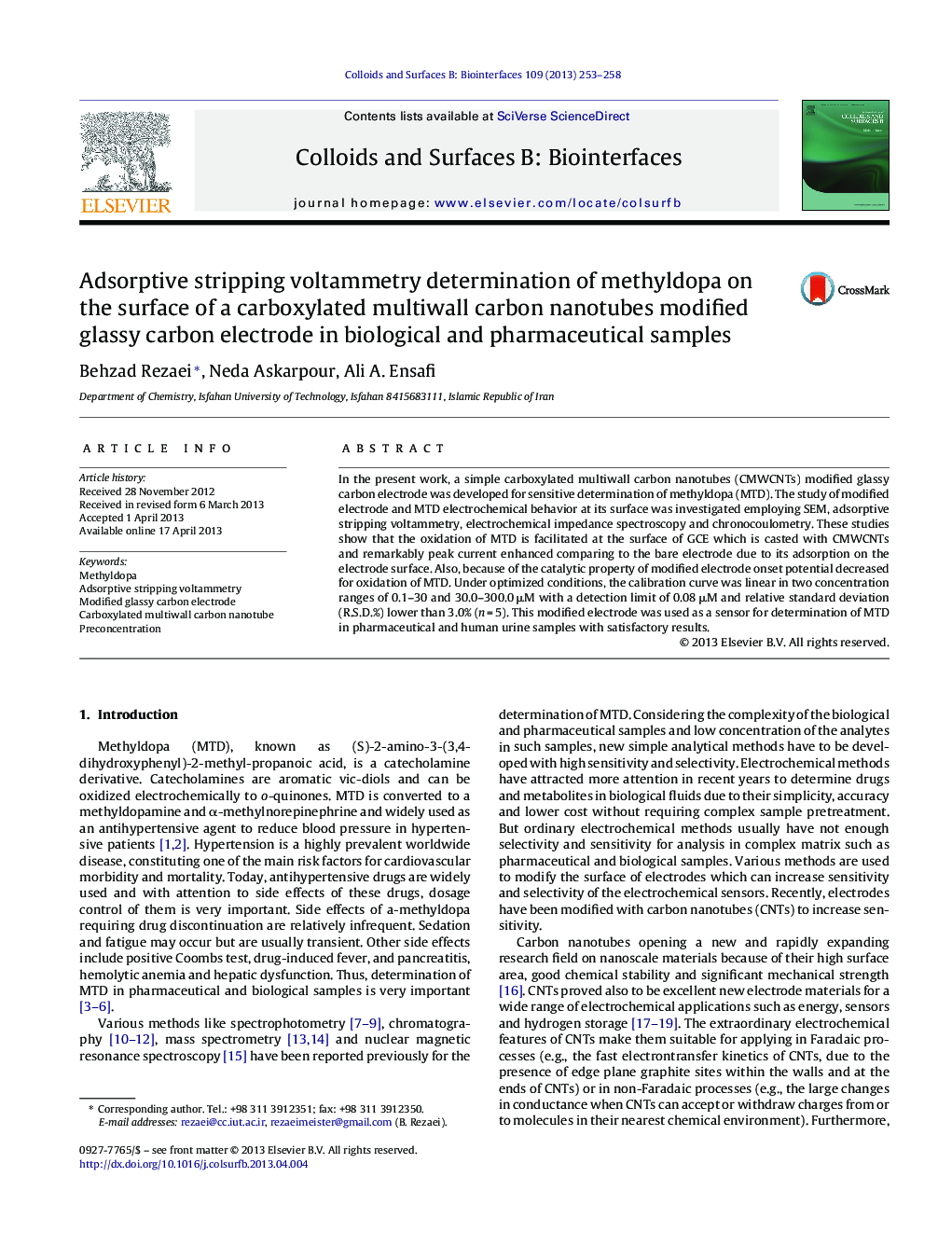| Article ID | Journal | Published Year | Pages | File Type |
|---|---|---|---|---|
| 600104 | Colloids and Surfaces B: Biointerfaces | 2013 | 6 Pages |
•Develop a methyldopa sensor using an activated carbon nanotubes modified electrode.•Methyldopa determination is based on its strong adsorption on the surface of CNT.•Modified electrode used as a preconcentration tool for highly sensitive measurement.•The proposed modified CMWCNT-GCE offered a very wide linear dynamic range.•Low detection limit obtained for determination in comparison to other electrodes.
In the present work, a simple carboxylated multiwall carbon nanotubes (CMWCNTs) modified glassy carbon electrode was developed for sensitive determination of methyldopa (MTD). The study of modified electrode and MTD electrochemical behavior at its surface was investigated employing SEM, adsorptive stripping voltammetry, electrochemical impedance spectroscopy and chronocoulometry. These studies show that the oxidation of MTD is facilitated at the surface of GCE which is casted with CMWCNTs and remarkably peak current enhanced comparing to the bare electrode due to its adsorption on the electrode surface. Also, because of the catalytic property of modified electrode onset potential decreased for oxidation of MTD. Under optimized conditions, the calibration curve was linear in two concentration ranges of 0.1–30 and 30.0–300.0 μM with a detection limit of 0.08 μM and relative standard deviation (R.S.D.%) lower than 3.0% (n = 5). This modified electrode was used as a sensor for determination of MTD in pharmaceutical and human urine samples with satisfactory results.
Graphical abstractFigure optionsDownload full-size imageDownload as PowerPoint slide
